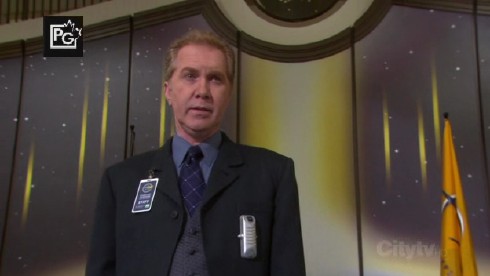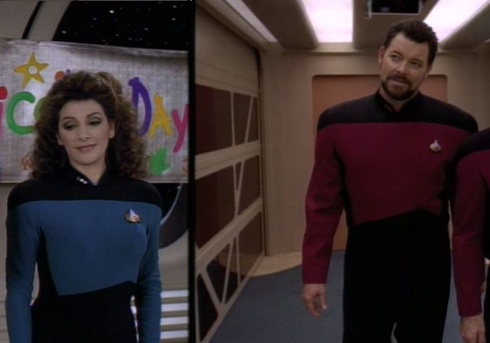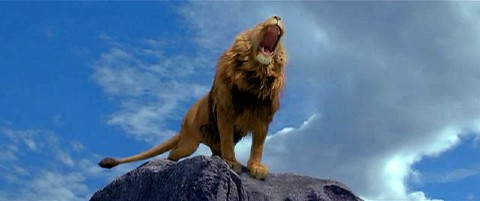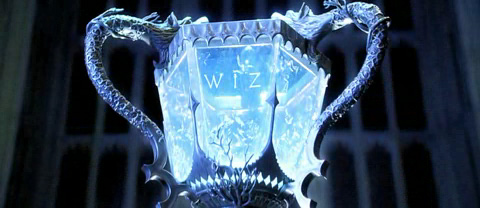Some interesting tidbits in Wired’s look at the upcoming Spielberg/Cruise version of War of the Worlds that caught my eye.
First, on the choice between showing every last little detail of whatever violence is on-screen and holding back to let the audience’s imaginations take over:
…though the alien war machines can wreak almost unimaginable havoc, what you see onscreen will not be hyperviolent. “It’s realistic,” Spielberg says, “but I wouldn’t call it graphic. If this movie required the graphic violence that Saving Private Ryan required, I would have done that. But this time I didn’t have to honor the real-time experience of veterans of World War II. And sometimes what you don’t see is more frightening than what you could be seeing.”
Absolutely. That’s a big part of why I liked Dean Koontz over Stephen King when I was younger (and before I noticed that Koontz has a bad habit of writing the same story over and over): where King sometimes has an almost fetishistic drive to describe in nearly forensic detail every last spatter of blood and twist of the knife, Koontz often wrote with broader brush strokes (to mangle an analogy).
Since I’m the only one who really knows what’s really likely to scare me, Koontz’ style ended up being far more effective, as it let my imagination fill in the gaps. With King, I usually just went “ewww…ick” and moved on.
Similarly, it’s why most horror movies are fun and might make me jump, but rarely scare me, but The Blair Witch Project did an incredible job of giving me the creeps. It was all my imagination at work — and I’ve got a sneaking suspicion that the majority of the people who wrote off TBWP as a pointless waste of a movie are sadly limited in where their imagination is able to take them.
On the as-yet unseen alien war machines:
One thing nobody will be seeing before the film’s release, if Spielberg has his way, is his interpretation of Wells’ alien war machines: The tripods are the production’s biggest secret. Dennis Muren, the legendary visual effects supervisor, promises they’ll have menace to spare.
…it wasn’t until last year that [Murren] got the scoop on The War of the Worlds from a friend of its original production designer. “They wanted to do tripods in 1953, but they couldn’t figure out how to make them walk,” he reports – so they switched to hovering saucers, then built models and suspended them above the soundstage on wires so they seemed to float above the ground. “Now we have the technology to do it.”
I hadn’t even thought about that before — just how would a walking tripod maneuver? The older movie‘s solution worked wonderfully, both in staying faithful to the tripod motif and making it work on-screen (you can see three energy beams supporting the saucers as they move, so they’re not really hovering), but now I’m really curious as to how that’s going to work in this new version.
On the difference between traditional and digital filmmaking, and the (friendly, I’m assuming) arguments between Spielberg and Lucas regarding their relative strengths:
Neither pre-viz nor Zeno [Digital moviemaking technologies discussed elsewhere in the article — MH] has softened Spielberg’s almost fetishistic appreciation for film – not just shooting on film, which is still the norm in Hollywood, but editing on film, which is all but unheard-of anymore. For most directors, editing a huge, rush picture on film would be a suicidal luxury; for Spielberg, who’s worked with the same editor since 1977, it’s just a luxury. “I love being able to have an actual byproduct of photochemistry in the room with me,” he says. “I love the smell of it. I love being able to hold up the film and see actual frames. I love hearing the butt-splicer cut through the celluloid. I’ll do everything else in the digital era, from pre-viz to digital dinosaurs. But there are certain things I’m hanging on to tenaciously.”
Lately, Spielberg and Lucas have been arguing over whether to shoot the fourth episode of Indiana Jones, one of the many projects on Spielberg’s to-do list, in digital. “If anybody is able to get me to shoot on digital, George is the one,” he says. “But do we want to evolve things to a clarity that is indistinguishable from real life? Movies suspend reality – suspend and extend reality. We’re interpreters. If things get too clear, it won’t look like there’s an interpreter.”
Count me in on Spielberg’s camp on this one, and I hope he’s able to convince Lucas to go with film for Indy IV. As much as I like all the neat things that can be done with digital effects and techniques, I’ve got a soft spot for the “old-school”, physical techniques. There’s a look to them that I haven’t seen duplicated with digital work, whether it’s the grain of the film or the simple reality of physical special effects.
Two of my favorite DVDs are The Labyrinth and The Dark Crystal, both of which had creature effects done by Jim Henson’s studios. Each of these DVDs includes a fascinating hour-long documentary on the making of the films, from the construction of the creatures to the puppeteering work during filming. It’s incredibly neat stuff, and I’ve got a ton of respect for the artists that worked on these projects.
(In another life, rather than spending the past decade making copies, I became a puppeteer with Henson’s studio. Man I’d love to be involved in that!)
Besides, while many people are trumpeting digital filmography as a way to work quicker and get a film in on time, the article makes it clear that Speilberg has been able to craft his film using traditional shooting techniques and keeping the digital work in the pre- and post-production phases and still deliver the finished product on time. Given, he has many years of experience with this, but at least it’s clear that going purely digital isn’t the only way to make a movie, just because it’s the newest and fanciest way.
![]()
“Financial Leprosy” by Disposable Heroes of Hiphoprisy, The from the album Hypocrisy is the Greatest Luxury (1992, 5:30).






